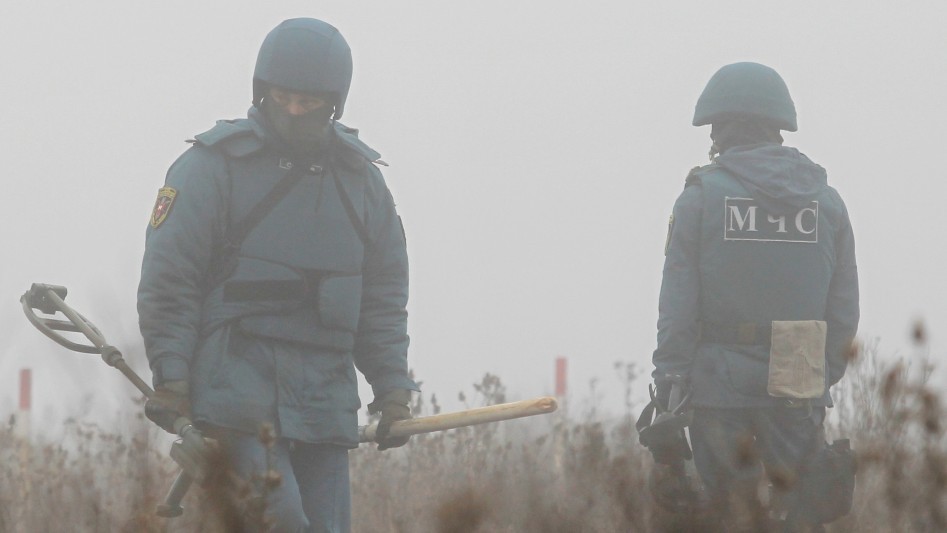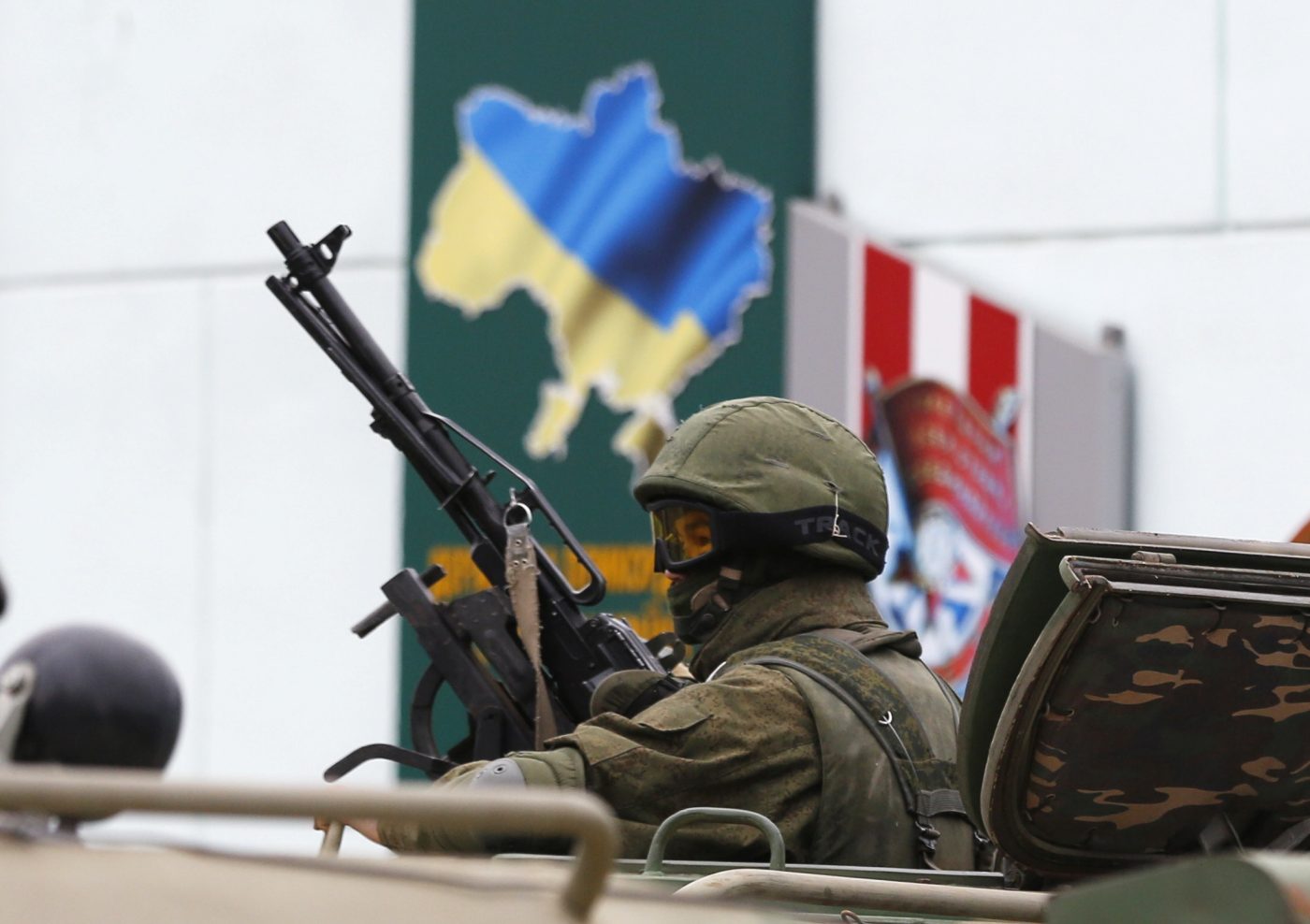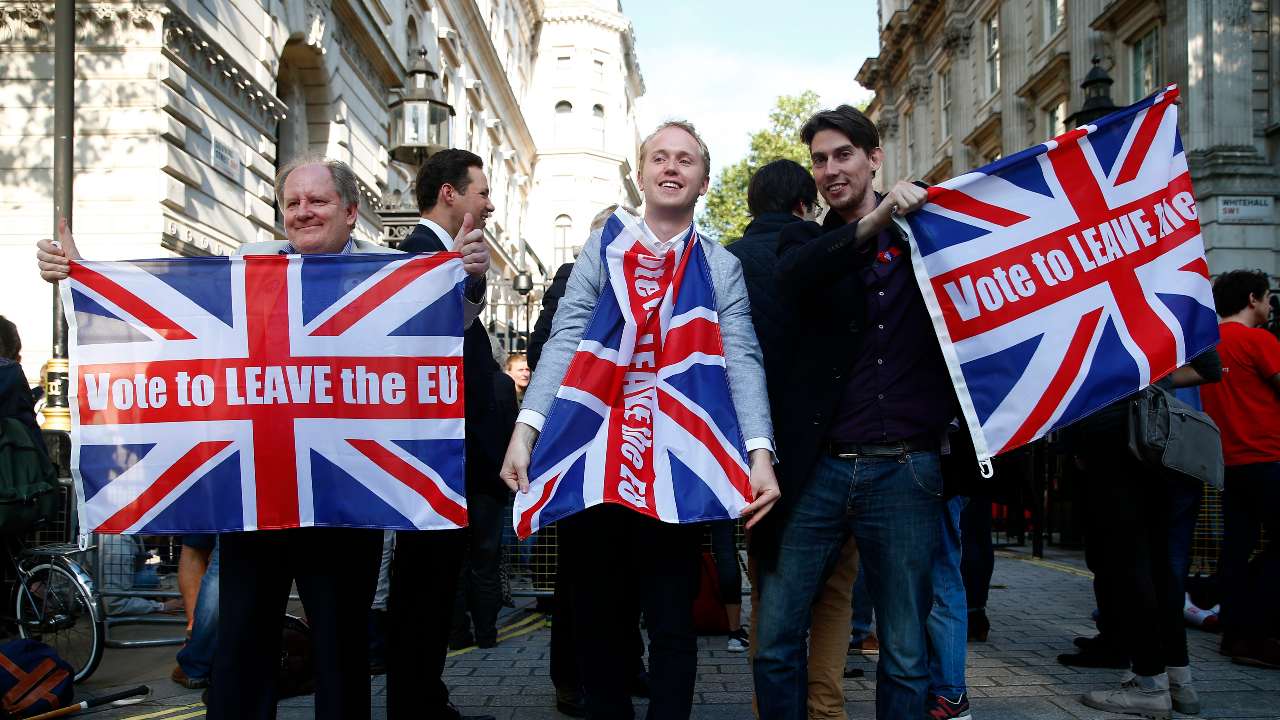In 2018, CEPA examined Russia’s approach to nonlinear competition in its well-received report “Chaos as a Strategy: Putin’s ‘Promethean’ Gamble.”1 The report’s initial assessment was that Kremlin leaders were applying military and nonmilitary means as one in the same, that they were strategic in intention and opportunistic in their use of chaos, and that they were succeeding by effectively managing two of the most essential variables in their strategy: time and risk.
The result is a form of strategic competition whereby Russia sows chaos to achieve its agenda beyond its borders by deploying an array of hybrid warfare tools. This “chaos strategy” calculates that a relatively weakened Kremlin can avoid direct competition with the West to still successfully compete by splintering its opponents’ alliances, dividing them internally, and undermining their political systems, and by doing so ensure long-term regime survival.2
From the Kremlin’s perspective, hybrid warfare is a tactical application of the chaos strategy. It is full spectrum warfare that deploys a blend of conventional and nonconventional means aimed at affecting on the ground changes in target while seeking to avoid direct military confrontation with Western states. Hybrid warfare is employed in a tailored way to sow chaos in target countries. Such efforts generally include irregular warfare, active measures, and special operations.3 Unable to compete in direct confrontation, the Kremlin’s use of hybrid warfare is a means to compensate for its weaknesses vis-à-vis the United States and NATO.
But hybrid war is not static. Over time, Russia’s views on the conduct and efficacy of its chaos strategy with the West has evolved based on experience, development of new tools, and assessment of the Western response. From the West’s point of view, it is paramount to assess the evolution of Russia’s hybrid warfare tactics to better understand likely developments in multi-vector warfare against Western interests, international institutions, and frontline states.
The West, however, is not united on how to confront the issue and define common solutions to the problem, especially because lessons learned from one case rarely apply to another. Given that Russia’s strategic assumptions about the conduct of hybrid warfare appear to be changing, Western policymakers would benefit from a fresh examination of how Russia’s strategists and military leaders are adapting hybrid warfare tools to increase chaos, and Western responses to it.
This report seeks to assess, understand, and respond to the evolution of Russia’s vision of the chaos strategy through critical examples of Russia’s use of hybrid warfare. It looks at the evolution and adaptations of Russian hybrid warfare against four target countries and institutions — Ukraine, a frontline state suffering the consequences of aggressive Russian military and sub-threshold action; Estonia, whose resilience against Russian cyberattacks has inspired major policy changes in Europe regarding information security; the United Kingdom, a unique and remarkable example of how Western countries are affected by subthreshold activities, especially in the informational realm; and, finally, institutions like the European Union (EU) and NATO, which are seeing their internal cohesion put to the test by Russian non-linear operations.
Each case study examines the evolution of Russia’s tailored toolkit of nonlinear means of action, the impact on respective countries and institutions, as well as policy responses to the challenge. However, the Russian toolkit of hybrid means is different in each case study because these represent diverse theaters of operation for the Russian regime. Different tools are, therefore, deployed to different degrees to obtain different results.
What ties these case studies together is the fact that they are all targets of the Kremlin’s chaos strategy. A key takeaway for understanding differing effects is that chaos strategy works in concentric circles: the further a country is from Russia, the less exposed it becomes in terms of diversity and impact of hybrid tools employed against it. Responses must, therefore, be crafted to fit the specific national and institutional environments.
Russia’s Worldview and the Brith of Chaos
The chaos strategy, and the tactical use of hybrid warfare, was borne out of the perception among the Russian leadership that Russia is locked in a form of great-power competition with the United States and Europe, as well as increasingly with China. The stakes are high: ultimately, it is about the survival of the current Russian regime.1
For decades since the end of the Cold War, Russian authorities have been feeding a sense of post-Cold War humiliation that Russia’s security concerns were not sufficiently taken into consideration, if not downright ignored. This grievance narrative is reinforced by a “besieged fortress” mentality at home that is fueled by a fear of encirclement by NATO forces and exclusion from the European security architecture. This would have forced Russia to choose confrontation over cooperation with the West.
The Russian leadership has the perception that there is a window of opportunity to take action and make foreign policy and security intentions a reality4
— the war with Georgia in 2008 was a harbinger of Russia’s reassertion. What followed were calculated steps aimed at doing away with an international order the Kremlin leadership feels cheated by and disappointed with.
For Russia, the problem remains that it cannot compete in a direct contest of national power — political or conventional military — with its peer and near-peer competitors. The Russian leadership fundamentally feels its conventional military is inferior to the West’s, and especially NATO. Therefore, as Russia cannot compete symmetrically, it chooses to contest and disrupt asymmetrically.5
It follows that Russia has seeded chaos via asymmetrical means through disinformation, cyberattacks, political subversion, business ties, and economic warfare, among other tools. The approach has combined both old and new, drawing on lessons from the successful use of Soviet-era asymmetric strategies, but amplified with the power of modern technology and social media.
Nonmilitary hybrid tools, as those being pondered by Russian military planners, are part of warfare per see.6
Such means represent a coordinated and tailored effort at the strategic level to reshape the internal course — be it political, economic, or societal — of target countries. Russia uses a synergetic and convergent toolkit of military and nonmilitary tactics7
in its protracted conflict with the West, honed by a willingness to alter, by force if necessary, the Western-led liberal international order. This effort also seeks to increase Russia’s international standing in absolute and relative terms as well as advance Russian interests against the West.
Chaos 1.0: The Rise and Fall of the ‘Gerasimov Doctrine’
While many voices feed the collective picture of Russia’s military posture, Western analysis was swift to attribute the origins of Russia’s current behavior to Chief of the Russian General Staff Gen. Valery Gerasimov. In February 2013, Gerasimov articulated his theory of modern warfare in a now-famous article for the Military-Industrial Kurier.8 “Hybrid warfare” and the “Gerasimov doctrine” were consequently coined as umbrella terms9 in the West to describe, often without context or erroneously, Russia’s nonlinear approach to conflict. Indeed, the article was written in the context of Russia’s response to the Arab Spring and fears of the spread of color revolutions against Kremlin-friendly regimes. Gerasimov fused methods from previous attempts to use nonlinear competitive strategies against more powerful rivals with updated technology and military concepts.
In this context, Russian operations must lead to information and psychological dominance of the enemy. Seeding chaos is, therefore, part of what Russian military strategists refer to as the “initial period of war” — taking after Soviet military theory but applied to modern warfare. These concepts eradicate the line between peace and war, placing politics and armed conflict in the same category.
In his text, Gerasimov described the way advanced military powers in the West engage in warfare, while outlining the importance of nonmilitary means to achieve military goals. He highlighted the primary threats to Russian sovereignty and suggested that the Kremlin’s political leadership needed to be more open to innovative ideas on future security challenges.10
Gerasimov drew from Russian military strategists like Vladimir Slipchenko, the former vice president of the Russian Academy of Military Science,11 military writers Sergey Bogdanov and Sergey Chekinov,12 and Chief of Main Directorate for Political-Military Affairs of the Russian Armed Forces Andrey Kartapolov.13
This is rather a tactical application of how Russia understands modern warfare. It reflects a pragmatic acceptance of the need to take what opportunities arise. What makes this chaos strategy unique is the fact that the synergy between nonlinear and nonmilitary tactics is no longer auxiliary to the use of force, but rather the equivalent of force itself. Of course, Russian military thinkers did not exclude the use of conventional forces. On the contrary, they stressed Russia’s need for innovation and the wider modernization of its armed forces. Russia’s “soft power” (miagkaia sila) is only here to prepare the ground for hard power.
Based on Western responses to their behavior patterns thus far, Russian leaders could draw the conclusion that time is indeed on their side. Disorientation and distraction in the West produce more one-sided concessions, and, therefore, purchase more time for Russia than victory on any battlefield. Worse yet, the second lesson that Russian leaders could draw is that risk-taking works. CEPA’s analysis of the “Chaos 1.0” strategy warned that an underlying danger for Russia was in executing the strategy over an extended period.1
Chaos 2.0: Understanding the Evolution of Hybrid Warfare
Chaos is not entirely static. A significant event in the evolution of Russia’s use of chaos to compete against the West occurred when Gerasimov delivered a keynote speech to the Russian Academy of Military Science in March 2019.14 Gerasimov reported on evolutions of military strategy and military-scientific developments. The address was important in how it differed from his 2013 assessment on the use of nonlinear means to sow chaos.15
While presenting operational lessons learned from recent deployments in Syria, Gerasimov insisted on the use of military power as well as political-military coercion.
Throughout his speech, Gerasimov insisted on two main “vectors” in the development of Russian military strategy: limited action and active defense. These developments will influence military thinking and, subsequently, military procurement in the coming years, as well as likely inform new iterations of the Russian military doctrine. All these represent, in a way, Gerasimov’s personal military legacy.
The strategy of limited action outside Russia’s borders seeks to counter existing threats to Russian national interests through limited out-of-area military intervention. This largely encompasses lessons learned from operations in Syria, and to an extent in eastern Ukraine. Accordingly, asymmetric and nonlinear methods of action are paramount, not least to obtain and keep informational superiority throughout the duration of military operations with an emphasis on surprise and decisiveness. While this does not offer a blueprint for persistent global power projection, which Russia cannot afford, limited action endorses the focused application of conventional military power as a tool of state power to achieve national aims.16 This is a dangerous reminder for the West and its allies that the chaos strategy is indeed working. Instead of becoming subtler and more nuanced, Russia’s ambitions for chaos are becoming bolder and more direct, as depicted in the case studies.
The strategy of active defense aims to preemptively neutralize threats through active measures. Accordingly, this would be a response to Western interference, depicted by Gerasimov as a “Trojan Horse.” This reference to the West is more confrontational than before: it frames the United States as an “aggressor” and accuses it of developing interference strategies that combine fifth-column political warfare and color revolutions with high-tech global strike capabilities. This, too, is linked to the preparation of the operational environment through information superiority and the use of nonlinear tactics. Active defense employs the Soviet toolkit of deception (maskirovka) and places the onus on nonmilitary means of action.17
Entropy in a Changing World
Russia’s military interventions in Syria, Venezuela, and, more recently, Libya raise the question whether the Kremlin is still being opportunistic or whether it has revised its military strategy to better project force around the globe based on a single playbook. These interventions have taken advantage of preexisting chaos and weakness that Russia did not directly cause. Together with its growing conventional power, Russia is now far more confident about using hard power in the hybrid mix.
The aforementioned changes in Russian military thinking reflect a reinvigorated confidence in the efficacy of chaos as a competitive strategy. If anything, the Kremlin leadership feels vindicated about the usefulness of hard power options, while categorizing nonmilitary means as a tool to prepare conflict environments and make the use of force more effective.18 This is best exemplified by Kalev Stoicescu’s chapter on Estonia, where the threat of Russia’s military action cannot be dissociated from hybrid tools aimed at testing the country’s resolve below the threshold of Article V of NATO’s founding treaty, which commits the Alliance to collective defense.
Among the drivers of change in Russian thinking, disappointment and unexpected outcomes have been some of the most powerful. As Kateryna Zarembo and Sergiy Solodkyy show, this is most notably the case with low-intensity military operations in Ukraine: difficulty in upholding a degree of “plausible deniability” of direct military intervention; war fatigue; issues with managing proxy groups and local militia; the failure of “Novorossiya” and other ideological products in Ukraine;19 the absence of an exit strategy in the Donbas, etc. Russia has now altered its originally ambitious aim (to control Crimea and the Donbas) in favor of perpetuating a persistent, low-scale conflict that will impede Ukraine’s integration into Western security structures.20
Further afield, in the United Kingdom, Precious Chatterje-Doody explores how Russian hybrid operations — mainly information operations — have been adapting in order to infiltrate networks, destabilize internal norms, and ultimately create an environment conducive to Russian interests. Oscar Jonsson outlines Russian tactical adaptations in the EU and NATO, where Russian hybrid tools are used to increase political polarization and challenge institutional cohesion.
Chaos strategy through hybrid, multi-vector warfare is here to stay. The consequences of this are many and unwanted, and notably include the potential for miscalculation with the West. To avoid such a situation, U.S. experts and leaders can learn much from the knowledge and experiences of allies and partner states in Europe — countries and institutions which have long been contending with the most aggressive forms of Russia’s hybrid warfare.
Table of Contents
Acknowledgments
The authors are grateful for research assistance provided by U.S.-based journalist Iryna Solomko, as well as the communications and editorial team at the Center for European Policy Analysis (CEPA). The authors would also like to thank the external peer reviewers for their invaluable comments and suggestions, as well as Donald Jensen for his original framing of the research question. This report was made possible with generous support from the Smith Richardson Foundation.
About the Authors
Alina Polyakova is the President and Chief Executive Officer of the Center for European Policy Analysis (CEPA). She serves on the board of the Free Russia Foundation and the Institute of Modern Russia and is a professor of European studies at the Johns Hopkins School of Advanced International Studies (SAIS). Dr. Polyakova was the founding director for global democracy and emerging technology at the Brookings Institution.
Mathieu Boulègue is a research fellow at the Russia and Eurasia Programme at Chatham House, the Royal Institute of International Affairs, in London. Before joining Chatham House, Mathieu was a partner at the risk management and strategic research consultancy AESMA, where he worked as director of Eurasian affairs. In his research, Mathieu focuses particularly on Eurasian security and defence issues as well as on Russia’s domestic and foreign policy.
Kateryna Zarembo, Associated Fellow, the New Europe Center. She teaches at the International Relations Department at the National University of Kyiv-Mohyla Academy. From 2010 to 2017 worked at the Institute of World Politics; she was a Deputy Director at the New Europe Center in 2017-2019. She got her Ph.D. from the National Institute for Strategic Studies (Kyiv, Ukraine), holds an MA in European Studies from the University College Dublin (Dublin, Ireland) and an MA in English and Italian Languages at the National Taras Shevchenko University (Kyiv, Ukraine).
Sergiy Solodkyy, First Deputy Director of the New Europe Center, is an expert in foreign policy, international relations, and security. Previously, he worked at the Institute of World Policy (2010-2017). Solodkyy graduated from the Westminster University majoring in International Relations and also from the Institute of Journalism of the Taras Shevchenko National University of Kyiv.
Kalev Stoicescu is a Research Fellow at the International Centre for Defence and Security (ICDS) in Estonia. Prior to joining ICDS in August 2014, Kalev was an Estonian Ministry of Foreign Affairs and Ministry of Defence official. Among other fields, he specializes in issues related to Russian foreign and domestic policy, as well as developments in the field of NATO’s defence and security. He served at the Ministry of Foreign Affairs from 1991-2000, including as Ambassador to the OSCE and Ambassador to US and Canada. He was a member of the Estonian delegation in border negotiations with Russia and Latvia.
Precious N Chatterje-Doody is a Lecturer in Politics and International Studies at The Open University, UK. Her research focuses on Russian approaches to communication, memory, and security, and she is the author (with Dr. Ilya Yablokov, Leeds University) of Russia Today and Conspiracy Theories: People, Power, and Politics on RT, forthcoming with Routledge in 2021.
Oscar Jonsson is academic director at the Center for the Governance of Change at IE University. He was earlier director of Stockholm Free World Forum, a subject-matter at Swedish Armed Forces Headquarters, and a visiting scholar at UC Berkeley. He holds a Ph.D. from the Department of War Studies, King’s College London, and is the author of The Russian Understanding of War (Georgetown University Press).
- Jensen, Donald N., and Doran, Peter B. 2018. “Chaos as a Strategy: Putin’s “Promethean” Gamble.” Center for European Policy Analysis, November, 2018, https://cepa.org/chaos-as-a-strategy/. [↩] [↩] [↩]
- Inkster, Nigel. 2016. “Information Warfare and the US Presidential Election.” Survival, 58 (5): 23-32, https://www.tandfonline.com/doi/full/10.1080/00396338.2016.1231527. [↩]
- “Lexicon for Russian Influence Efforts.” National Intelligence Council, June, 16, 2017, and Giles, Keir. 2016. “Russia’s “New” Tools for Confronting the West: Continuity and Innovation in Moscow’s Exercise of Power.” The Royal Institute of International Affairs, Chatham House, March, 2016, https://www.chathamhouse.org/2016/03/russias-new-tools-confronting-west-continuity-and-innovation-moscows-exercise-power [↩]
-
Gorenburg, Dmitry. 2019. “Circumstances Have Changed Since 1991, but Russia’s Core Foreign Policy Goals Have Not.” PONARS Eurasia, January, 2019, https://www.ponarseurasia.org/memo/circumstances-have-changed-russias-core-foreign-policy-goals-have-not. [↩]
- Polyakova, Alina. 2018. “Weapons of the weak: Russia and AI-driven asymmetric warfare.” The Brookings Institution, November, 15, 2018, https://www.brookings.edu/research/weapons-of-the-weak-russia-and-ai-driven-asymmetric-warfare/. [↩]
- Jonsson, Oscar. 2019. The Russian Understanding of War: Blurring the Lines between War and Peace. Washington DC: Georgetown University Press, November, 2019. [↩]
- Giles, Keir. 2016. “Russia’s “New” Tools for Confronting the West: Continuity and Innovation in Moscow’s Exercise of Power.” The Royal Institute of International Affairs, Chatham House, March, 2016, https://www.chathamhouse.org/2016/03/russias-new-tools-confronting-west-continuity-and-innovation-moscows-exercise-power. [↩]
- Gerasimov, Valery. 2013. “Noviye vyzovy trebuyut pereosmysleniya form i sposobov vedeniya boevykh deistviy. (New challenges require rethinking of the forms and methods of warfare).” Voenno-promyshlenniy kur’er, February 26,, 2013, https://www.vpk-news.ru/articles/14632. [↩]
- Galeotti, Mark. 2018. “I’m Sorry for Creating the “Gerasimov Doctrine”.” Foreign policy, March, 5, 2018, https://foreignpolicy.com/2018/03/05/im-sorry-for-creating-the-gerasimov-doctrine/. [↩]
- Renz, Bettina. 2016. “Russia and “hybrid warfare”.” Contemporary Politics, 22 (2016): 283-30, DOI: 10.1080/13569775.2016.1201316, https://www.tandfonline.com/doi/abs/10.1080/13569775.2016.1201316. [↩]
- Slipchenko, Vladimir. 2013. “Information Resource and Information Confrontation: their Evolution, Role, and Place in Future War.” Armeyskiy Sbornik (Army Journal), No. 10 (2013). [↩]
- Chekinov, Sergey, and Bogdanov, Sergey. 2015. “A Forecast of Future Wars: Meditation on What They Will Look Like.” Voennaya Mysl’ (Military Thought), No. 10 (2015), and Chekinov, Sergey, and Bogdanov, Sergey. 2014. “Military Futurology: Its Origin, Development, Role, and Place within Military Science.” Voennaya Mysl’ (Military Thought), No. 8 (2014). [↩]
- Kartapolov, Andrey. 2015 “Lessons of Military Conflicts and Prospects for the Development of Means and Methods of Conducting Them, Direct and Indirect Actions in Contemporary International Conflicts.” Vestnik Akademii Voennykh Nauk (Bulletin of the Academy of Military Science), No. 2 (2015). [↩]
- “Vektory razvitiya voyennoy strategii (Vectors of military strategy`s development).” Krasnaya Zvezda, March, 4, 2019, http://redstar.ru/vektory-razvitiya-voennoj-strategii/. [↩]
- Felgenhauer, Pavel. 2019. “A New Version of the “Gerasimov Doctrine”?” Jamestown Foundation, Eurasia Daily Monitor, vol. 16, no. 32, March, 7, 2019, https://jamestown.org/program/a-new-version-of-the-gerasimov-doctrine/. [↩]
- Frolov, Vladimir. 2019. “Why Moscow Sent Its Military Personnel to Venezuela.” The Moscow Times, April, 2, 2019, https://www.themoscowtimes.com/2019/04/02/why-moscow-sent-its-military-personnel-to-venezuela-a65052. [↩]
- Polyakova, Alina. 2018. “Weapons of the weak: Russia and AI-driven asymmetric warfare.” The Brookings Institution, November, 15, 2018,https://www.brookings.edu/research/weapons-of-the-weak-russia-and-ai-driven-asymmetric-warfare/. [↩]
- Renz, Bettina, and Smith, Hanna. 2016. “Russia and Hybrid Warfare – Going Beyond the Label.” Aleksanteri Papers, 1/2016.https://www.stratcomcoe.org/bettina-renz-and-hanna-smith-russia-and-hybrid-warfare-going-beyond-label. [↩]
- Igor ‘Strelkov’ Girkin also admitted that the Novorossiya project was nothing more than propaganda and that the true goal was a Crimea-like takeover and not the establishment of an independent state. See Chekalkin, Dmitry. 2014. “How Russia invaded Ukraine as told by FSB colonel Girkin.” Euromaidan Press, December 7, 2014, http://euromaidanpress.com/2014/12/07/fsb-colonelgirkin-tells-details-of-how-russia-invaded-ukraine-in-twice-censored-interview/. [↩]
- Jensen, Donald N. 2017. “Moscow in the Donbas: Command, Control, Crime and the Minsk Peace Process.” NATO Defense College Research Report, March 1/17, 2017, https://www.ndc.nato.int/news/news.php?icode=1029. [↩]









